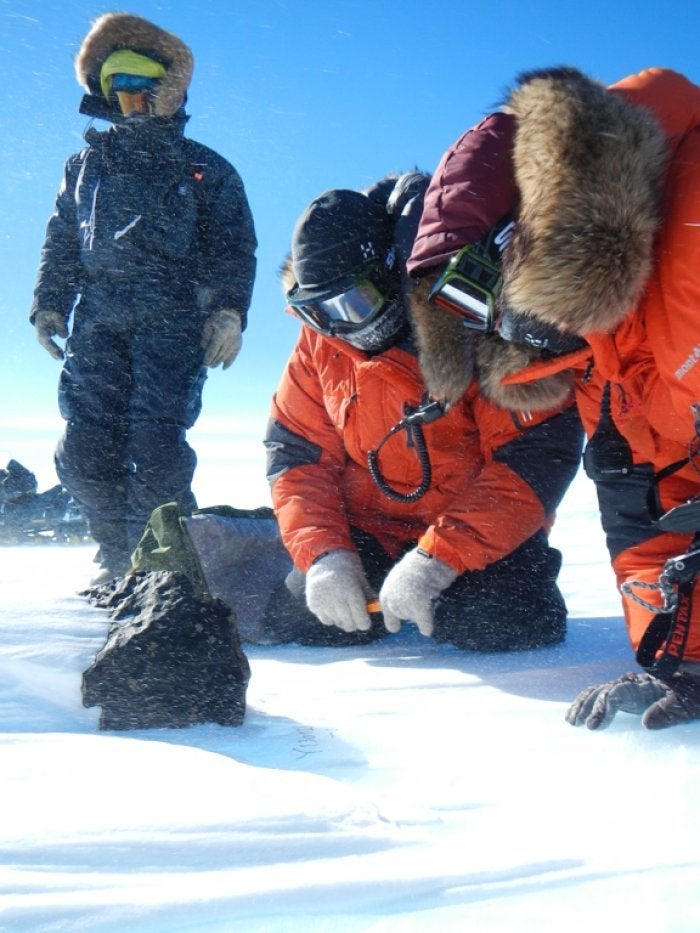
An unusually large meteorite has been discovered by an international team of researchers in Antarctica.
The team, searching an area known as the Nansen Ice Field, discovered the 40-pound space rock in late January, according to OurAmazingPlanet.
SCROLL FOR PHOTOS
Scientists from Université Libre de Bruxelles (ULB), Vrije Universiteit Brussel (VUB), Japan’s National Institute of Polar Research (NIPR) and Tokyo University were part of the expedition that discovered the extraterrestrial chunk, the largest such meteorite found in the region in close to a quarter century. The team was based out of the Princess Elisabeth Antarctica research station.
“This meteorite was a very unexpected find for us, not only due to its weight, but because we don’t normally find such large meteorites in Antarctica," Vinciane Debaille, a geologist who led the Belgian arm of the research team, said in a written statement on Feb. 28. “This is the biggest meteorite found in East Antarctica for 25 years, so it’s a very special discovery for us, only made possible by the existence and location of Princess Elisabeth Antarctica."
Known collectively as SAMBA, the international team had been searching the ice field since mid-December, according to the group's website. The team's current project is to collect large meteorites and study them. Eventually, the meteorites will be publicly displayed.
The SAMBA website describes the goal of such research:
Understanding how our planet works necessitates studying its interior. Direct geological records only document the crustal or uppermost fraction of our planet while the deeper parts remain totally outside of our reach. Meteorites coming from the asteroid belt between Mars and Jupiter have recorded information on how other planets formed and evolved through time; from undifferentiated primitive asteroids to differentiated small planets, showing the development of a crust, a mantle, and a metallic core just like those of the Earth.
Debaille's Feb. 28 statement also explained the group's work. "We study meteorites in order to better understand how the solar system formed, how it evolved, how the Earth became such a unique planet in our solar system," said Debaille.
OurAmazingPlanet notes that United States scientists also ventured "out on the polar ice to collect meteorites this season," but they were searching on the opposite end of Antarctica from the SAMBA outfit.
While meteors generally burn up in the atmosphere, in mid-February a huge meteor exploded over central Russia, showering the area in debris and creating a shock wave that injured hundreds.
PHOTOS of the recently discovered Antarctic meteorite:
